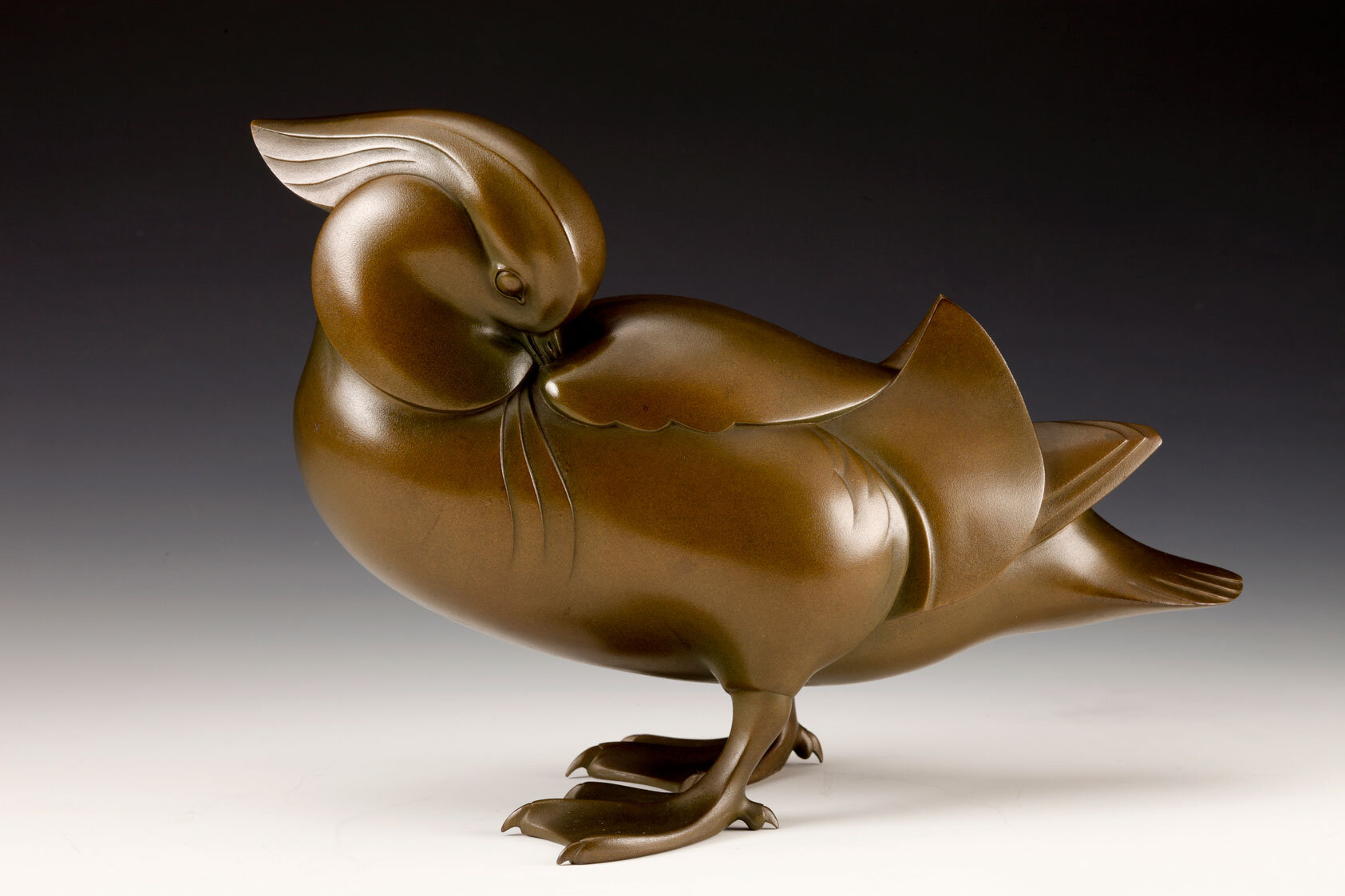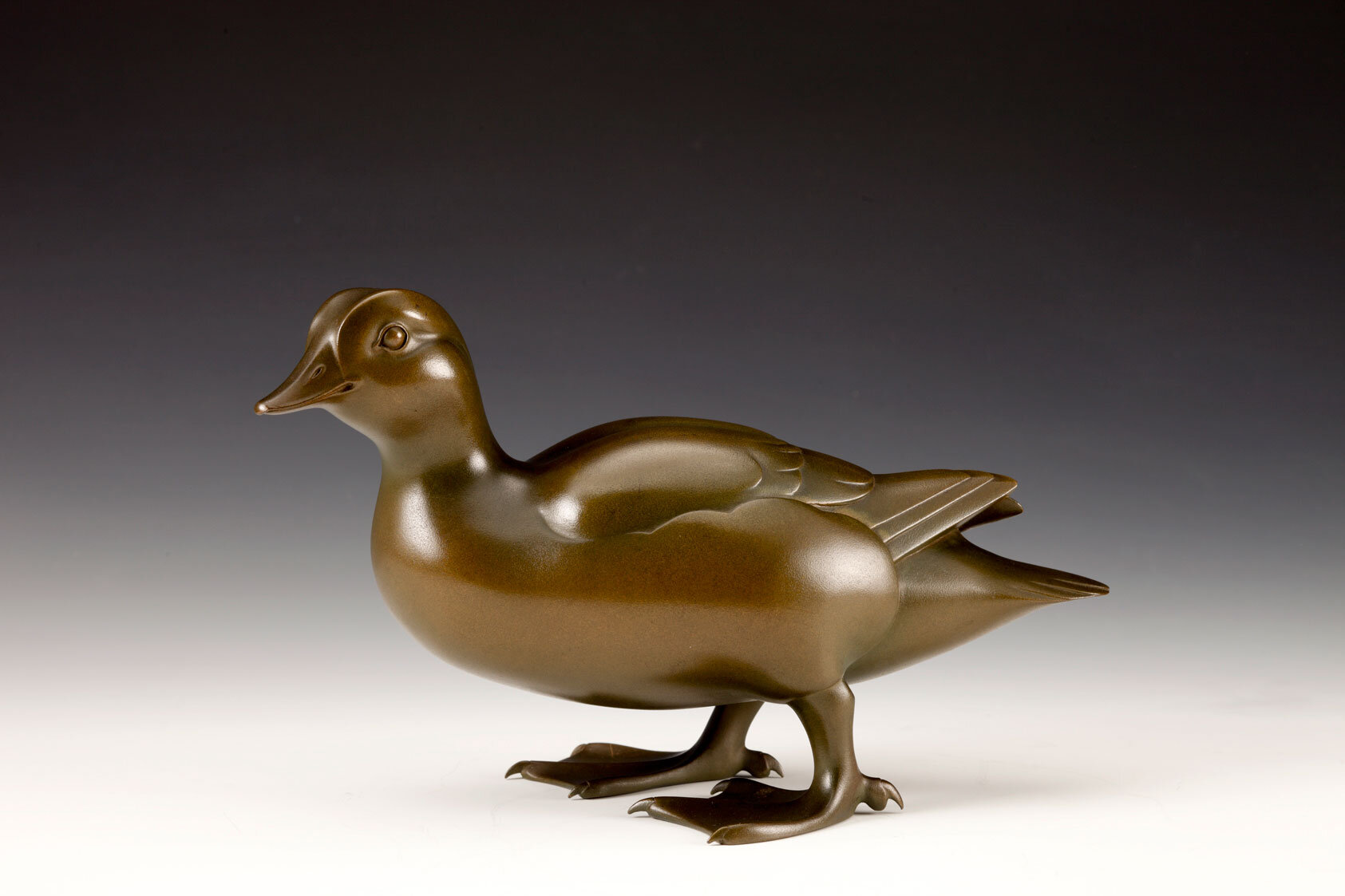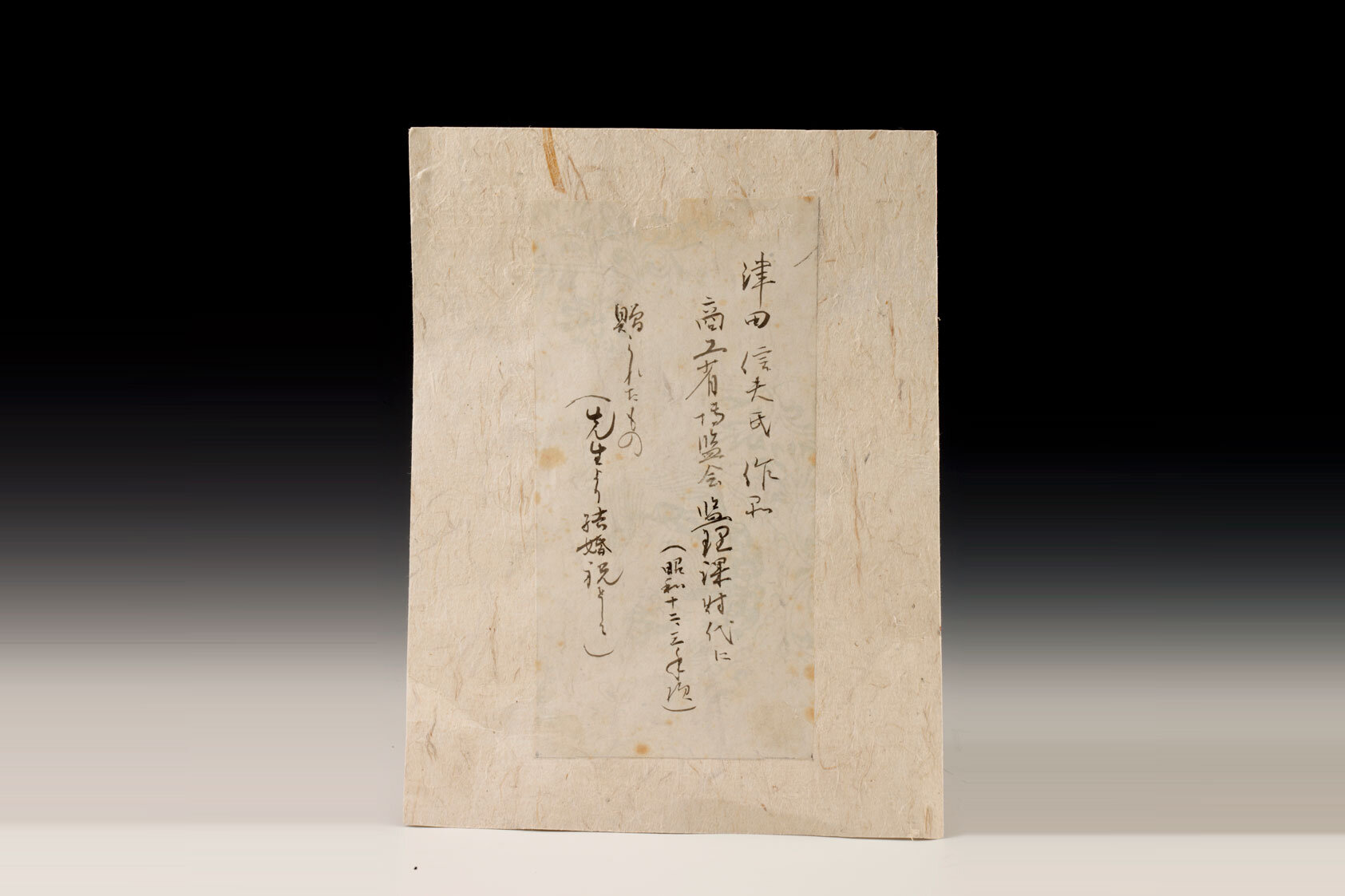ART DECO & MODERNISM
TSUDA SHINOBU, MANDARIN DUCK OKIMONO
Okimono or small sculptures in the form of a pair of modernist, Mandarin ducks. Of cast bronze with a yaki-urushi or baked lacquer finish. Each bird signed on the reverse of the tail with a chiseled signature by the artist: Daiju Saku or Made by Daiju (Daiju, the go or art name of Tsuda Shinobu, 1875 – 1946). Showa 12 or 1937.
With a new, fitted paulownia storage box. Accompanying the ducks is a letter from the artist, congratulating his friend on his marriage with the gift of these sculptures, dated to March of Showa 12 (1937).
Since Mandarin ducks were believed to mate for life, they represent wishes for a long and deepening marriage. Tsuda no doubt wrapped these in a furoshiki when he presented them to his friend, an informal and intimate presentation. Most of Tsuda’s work was sold through the exclusive Ginza commissioning house, Hattori Tokeiten in Tokyo. Hattori provided those pieces with wood boxes, to which they affixed their paper labels after arranging for the artist to sign the boxes. After the Pacific War, Hattori became the Wako Department Store, still a Ginza landmark.
Tsuda Shinobu was born in Chiba Prefecture. He studied under Okazaki Sessei and graduated from the Tokyo School of Fine Arts in 1900. In 1902, he returned to the school as an assistant professor, becoming a full professor in 1919. He began exhibiting his work in Meiji 40 or 1907 at the Tokyo Kangyo Hakurankai or Tokyo Industrial Exposition. A juror and exhibitor for the Japanese delegation to the Paris Exposition in 1925, Shinobu was twice decorated by the government of France, in 1928 and again in 1933. In 1935, he became a member of the Teikoku Bijutsuin or Imperial Academy of Fine Arts, and in 1937 of the Teikoku Geijutsuin or Imperial Arts Academy. An exhibitor at the Teiten, the Hoshukuten and Shin-Bunten, Tsuda Shinobu was one of the foremost artists working in metal in the decades prior to the Pacific War.
For other examples of Tsuda Shinobu’s work, c.f. Kagedo’s catalogues Blue Wind, numbers 49, 51, 52, and 61; Breaking Light, numbers 108, 109, 110, 111, 112 and 114; and Yukei, numbers 134 and 142.
Tsuda posed these ducks unusually, with the male dozing, his beak tucked into his wing. Atypically, the female stands alert on guard, reversing the traditional gender imagery. Stylistically they display the restrained elegance of Tsuda’s oeuvre. As a modernist, casting specialist, the artist abandoned the exhaustive detail pursued in earlier, Meiji and Taisho era metalwork. Volumes and edge lines curve sensuously, punctuated with sharply delineated features. These lovingly rendered ducks speak to the artist’s idea of their imagined, minimalist essence, and as such still seem fresh and modern today.
Tsuda Shinobu, Mandarin Duck Okimono
Artist Name: Tsuda Shinobu
Period: Showa Pre War
Styles: Art Deco, Modernist
Mediums: Metalwork
Form: Okimono or Sculpture
Origin Country: Japan
Female duck, 5 ½” high x 9” long x 4 ¾” wide
Male duck, 7 1/8” high x 10 ¼” long x 5 7/8” wide
This piece is no longer available.







